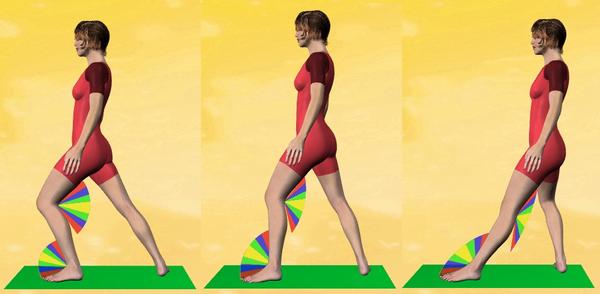How make a simple fan "protractor"
 marco95
Posts: 26
marco95
Posts: 26
Hi,
I want make a small cloth ou props as a fan who make visual the angle between the calf and thigh or between the tibia and the foot as you can see on the picture on attachement.
I suppose I can use the 4.6 possibility as Assets Transfert Utility or Edit Rigging ?
Can you help me to find the best method ?
Cordialy
Marc


daz-eventail-pb.jpg
997 x 488 - 152K


Comments
Would that work? The fan would stretch as the joint rotated, so you wouldn't be able to read off an angle. If you want to do it that way (and if you just want to get numbers you should have a look at Measure Metrics) then I think a plane, if necessary transmapped to a cricel and with angular divisions on its texture, parented to the parent bone of the joint and centred on the joint centre would work best.
My goal is educational, the goal is to visualize the angle of the joint during movement.
(I don't want to measure).
I have parent the fan to on bone, I want to parent it to 2 bones.
The effect you can see in my picture is a real animation with Daz.
I do it with modify scale at each key frame.
Maybe there does not get any better?
In attachement "the solution" but I don't know to do a dress.
Thank's
Well, you could model your fans to fit the zeroed figure, load them into DS fro OBJ, and use the Transfer Utility to transfer the joints and basic weights, but then you'd need to edit the weight maps to get a smooth gradient effect. I think that would be quite fiddly as you want the weights to fan, each ray out from the joint having a single weighting that progressively increases..
Ok, I do that Richard.
That the beginning of my work in attachement.
There is some aberrations when flex-legs is great.
The aberrations is greater when I use Mesh Smooth as you can see on the picture on the right.
I search how to weight maps tomorrow.
Thank's
Is you mesh made up of lines of vertices radiating out from the centre, with edges connecting them? If so you should be able to select all the vertices in each "spoke" (Geometry Editor Tool in vertex mode) and then assign weights to them (Node Weight Brush tool right-click menu). The spoke against the upper leg would be zero, that against the lower leg (which bends) would be one and the intermediate spokes would get intermediate values. However I suspect some joints will be harder than others to get reasonable - the knee, for example, has bulges going on that push the mesh out to simulate the compression, which might be one of the hardest to do, while at the ankle both the shin and the top of the foot probably don't shift much (since in reality they are pretty bare bone).
OK and thank you for your answer :o)